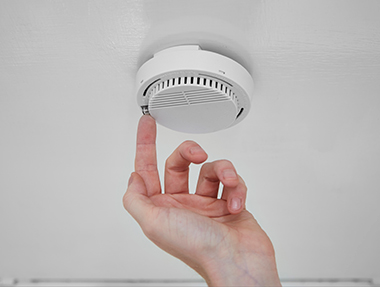Under proposed changes to the Residential Tenancies Act, every rental property in New Zealand must have smoke alarms fitted by 1 July 2016. Regulations will make landlords responsible for ensuring an operational smoke alarm is in place, and tenants responsible for replacing batteries or notifying landlords of defects.
For your information, please see below an extract from the MBIE website regarding the new smoke alarm law. For more information click here.
“By 1 July 2016 all residential rental properties covered by the RTA must meet the following regulatory requirements:
- There must be a minimum of one working smoke alarm within 3 metres of each bedroom door, and in a self-contained caravan, sleep out or similar there must be a minimum of one working smoke alarm.
- The landlord is responsible for making sure smoke alarms are in working order at the beginning of every new tenancy.
- The tenant is responsible for replacing batteries (if required) during their tenancy.
- In multi-story units there must be one smoke alarm on each level within the household unit.
- Long life photoelectric smoke alarms are now required where there are no existing alarms. When existing smoke alarms are replaced, the replacements must be long life photoelectric smoke alarms.
- Hard wired smoke alarms are also acceptable.
- All smoke alarms must be replaced in accordance with the manufacturer’s recommended replacement date stated on the alarm.
- All new and replacement smoke alarms in rental properties are to be installed in accordance with placement requirements provided in the manufacturer’s instructions. The illustrations below (click here for illustrations) from New Zealand Standard 4514 provide a simple guide on where to place alarms. You can also find helpful information on the NZ Fire Service’s website.
- When smoke alarms are installed or replaced, you should ensure the alarms you purchase comply with the manufacturing standard: Australian Standard AS3786:1993; or equivalent international standard: UL217 (USA), ULCS531 (Canada), BS5446: Part 1 (United Kingdom), BS EN 14604 (United Kingdom) or ISO12239 (International). (This should be displayed prominently on the packaging.)
It is an unlawful act for tenants to cause or permit any interference with, or to render inoperative, any means of escape from fire – which includes smoke alarms. The maximum fine for this offence is $3,000.
Note: These regulations don’t override any additional compliance requirements for smoke alarms in other legislation eg; multi-unit residential complexes, student accommodation or boarding houses.”
This article is an extract from Ministry of Business Innovation and Employment, 2 June 2016. Strata takes no responsibility for the accuracy of the information or for any consequences of any actions taken by the readers of this article.



